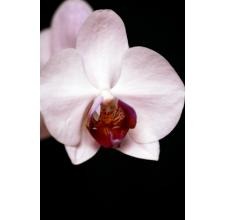The key to getting your orchid to grow like a weed is to give it the environment it enjoyed when it was a weed. Getting the watering, temperature and air flow correct for your type of orchid almost always guarantees success. Proper feeding is the last element needed to keep your orchids thriving.
General Rules
-
There are thousands of different orchids in the world; each type needs slightly different conditions to grow well. There are generalities that you can apply to almost all of the orchids that are available to the home grower.
In the Northern Hemisphere, your orchid will be growing strongest from March to October. This is when the plant is growing roots, leaves and bloom spikes. All this activity requires fuel, and these are the months that your plant really needs food.
Types of Orchid Food
-
.There are dozens of choices of orchid-specific fertilizers on the market. Many commercial growers use a fairly balanced, water-soluble orchid food all year round. Balanced means that the three numbers shown on the label (6-8-7, for example) are the same or nearly the same in value. These three numbers give you the ratio of nitrogen, phosphate and potash in the fertilizer.
Orchid-specific food is formulated so that it won’t burn the orchid roots. Your orchid is planted in a very light and airy mix, offering no buffering to the plant from the nitrogen in the food. If the fertilizer wasn’t formulated appropriately for orchids, the plant’s roots would burn and wither.
Because of the airiness of the planting mix, a water-soluble food is safer for the orchids than sticks or pellets, which can create "hot spots" of fertilizer. And yes, you can use a general purpose plant food instead of an orchid-specific food, but you must mix that at no more than half the usual strength to avoid burning the orchid’s roots.
Feeding Schdule for Orchids
-
Many orchids grow actively from March to July, when they require the most food. From July to October the growth rate slows, and from November to February your orchid is taking it easy. It does not go dormant, but its activity level is much lower than when it is in full-growth mode.
Orchid growers taper their feeding down from delivering the most fertilizer when the plant is actively growing to barely giving it any fertilizer while it is dormant. If you want something simpler, you should know that the absolute minimum feeding schedule for your orchid is once a month. It’s not optimal because the potting medium has no nutritional value itself, but it will keep the plant puttering along nicely.


Deprecated: strpos(): Passing null to parameter #1 ($haystack) of type string is deprecated in /home/agriviek8Qv/agriviet.net/public_html/wp-includes/comment-template.php on line 2522